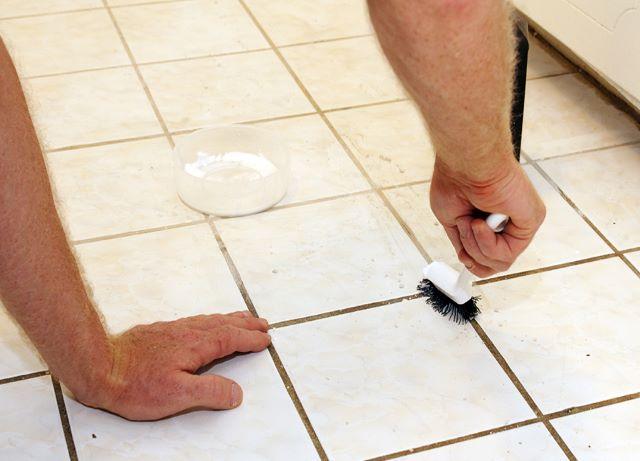You will find clean tile flooring in most homes. They are versatile, durable, simple to clean, and resistant to moisture. Although floor tiles are great for residential use, they can still collect dirt over time. To keep your tiles looking great and strong, you must clean them regularly. While regular mopping removes most of the ground from tiles’ surfaces, deep cleaning is required to remove stubborn or deep-seated stains.
Deep cleaning is the intensive cleaning of an area that is difficult or requires more effort. Deep cleaning aims to remove not only surface dirt but also hard-to-remove stains. Deep cleaning is standard for carpets, mattresses, and upholstered furniture. However, it could also be beneficial for tile floors.
Are your tiles in need of extra care? Deep cleaning floor tiles might be the right choice for you. Below are some valuable insights to help you.
Get a professional service to do the deep cleaning for you.
Summit Facility Services, or similar businesses that clean tile floors, is the best way to ensure they are spotless. You won’t have to worry about tile floors getting damaged by improper cleaning. A professional will do it all in no time.
Although they may be more expensive, the convenience and benefits professional deep cleaning brings to your home will be well worth it.
Do-it-Yourself Deep Cleaning
You can also hire a professional to clean your tiles. You can save money, gain a skill, and feel incredibly satisfied when your tiles are clean. Here are some great tips to deep clean your tiles:
Identify the Tile Type
You must ensure that you have the correct cleaning products for tiles before you begin the deep cleaning. This will help to prevent damage from incompatible cleaning products.
It is possible to identify the tile type of your floor and determine the best home cleaning solution. Some helpful home cleaning solution examples include:
- Slate Tiles: You can use mild detergent and water to clean Slat Tiles. Do not add acidic substances such as vinegar or lemon juice to slate, as this can cause damage.
- For Ceramic Tiles: Mix a mild detergent with warm water to clean glazed (shiny) tile floors. Add one teaspoon of vinegar to remove soapy residue from unglazed (matte) tile floors.
- Marble, Granite, and Limestone Tiles: Never use acidic elements as they could cause damage to their surfaces. To avoid discoloration, it is best to use hot water with a mild pH-neutral cleaner. Spray-type bottles are best for soft and even distribution.
- Get rid of all traces of dirt and oil from the surface.
Next, clean the area. To clean the area gently and thoroughly, you can use a soft bristle brush to sweep it. Or you can vacuum the surface to reduce physical labor and let the machine do the rest. To ensure you have a clean slate for the deep cleaning, remove all dust and dirt from the tile surfaces.
Stains Must Be Removed Immediately
You can now remove any dirt or stains from your tile floors.
It is best to remove tile stains as soon as you notice them. You can damage your floors and leave stubborn stains on the surface if you ignore them. Most stains can be removed with an all-purpose cleaner. However, you may need to alter the formula depending on the type of stain.
Club soda can be used to remove oil-based stains. After that, rinse the area with warm water. To avoid damage to the tile’s surface, use a gentle blotting method.
Hydrogen peroxide can be used to remove food stains. This chemical is gentle on tile, but it is effective in removing tough stains. Start by making a lint-free towel and then applying hydrogen peroxide to the cloth. Next, wipe off any stains with a clean cloth. You can then focus your cleaning materials on the discoloration to prevent them from touching your tiles.
Also Read: How to Maintain a Neat and Clean Floor in Your House
Your Tile Grout is What You Should Be Focusing On
Once you have removed any stains and each tile has been thoroughly cleaned, you can begin to grout. This will allow you to see your floor bright and clean finally.
Grout is very absorbent of dirt, grease, and grime. This can be a problem, especially in bathrooms or kitchens.
A sealant is an excellent way to keep the grout from collecting dirt. However, if the grout is not sealed correctly, it can lead to a messy mess. To avoid these problems, you need to find the best tile installer for floor tiles. You’ll then need to clean the floor yourself.
To clean your hair, you can use a small toothbrush. A toothbrush can be used to reach the small spaces between them. You can also use this to clean difficult-to-reach places and keep your bathroom spotless.
Mop your floors
It would be best to clean your grout and tiles before you mop your floors.
There are many mop types you can choose from, but it will be best if you avoid sponge mops. They’ll only spread dirt onto your tiles, making it difficult to get back to square one. A flat, microfiber, or chamois mop is the best choice for cleaning. They can absorb dirt and not spread it around your house.
Manually dry your floors.
It might seem tempting to dry your floors after mopping them. This will save you the hassle of doing extra work. However, if you leave moisture on tiles, it can cause damage to the grout. After cleaning tile floors, use a clean, dry cloth to dry them.
Takeaway
Deep cleaning your tile floor can make them look better and last longer. It might be tedious to clean each tile individually and choose the right cleaner. But the joy you get from a clean tile is well worth it. You can always hire a professional to make deep cleaning more manageable and efficient.


